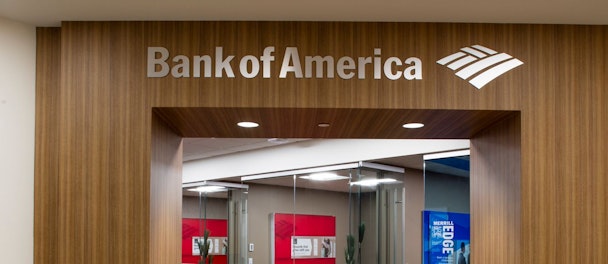Bank of America grows brand safety team as it recommits to news advertising
While a growing number of brands are running scared from advertising against news stories, Bank of America is spending 30% of its entire digital budget in the space. It’s mitigating any risks by building out the brand safety unit it first launched at the beginning of this year.

Bank of America grows its brand safety unit / Credit: Bank of America
Lou Paskalis, Bank of America’s senior-vice president of customer engagement and media Investment, first revealed the company had hired someone as a chief brand safety officer last February.
The announcement came at a fraught time for the digital ad industry, as advertisers frequently found their ads placed adjacent to illegal, upsetting or politically biased content on platforms such as YouTube and Facebook.
Now, Bank of America has expanded that singular role into a fledgling brand safety team. Terri Schriver, the company’s senior vice-president of enterprise media, has been joined by another executive responsible for monitoring issues of brand safety, ad fraud and spend transparency.
The bank has recently opened a third position to join them, according to Paskalis.
Schriver’s remit is to “minimize brand risk and maximize media investment by effectively traversing the martech landscape”, according to her LinkedIn page.
She does this, Paskalis explained, by working from “the same consistent set of principles”. These principles have been sold into leadership and link to Bank of America’s environmental, social and governance goals.
“We weren't sure if the [brand safety role] was even a full-time job to have,” he said. “Now, I can't imagine being in this environment – wanting to support news, wanting to make sure your brand's in a safe environment – ... without having an infrastructure and pre-established set of principles that are transparently aligned across the organization.
“Once you do all that work, it's not that hard. There's still an element of judgement but you're not going to stray too far from those bedrock of decisions.”
Forming a nuanced approach to brand safety is important to Bank of America because of its public commitment to supporting news journalism.
Targeting 'the real opinion makers'
The issues of the past few years, which saw advertiser content appearing next to videos of the Christchurch massacre and homophobic op-eds, have caused a number of big advertisers avoid spending with news platforms altogether.
In August, the Wall Street Journal reported on advertisers’ growing aversion to publishing their content next to certain words and phrases on publishers’ sites. The practice aims to protect brands from appearing to endorse content that is fake, offensive, highly political or sensitive, however has inadvertently meant established news sites that cover topics such as war and political upheaval have been burned by declining revenues.
Paskalis said Bank of America has taken a counter view, believing audiences drawn to quality news journalism to be the most engaged.
“Without a doubt, for Bank of America, news is an environment where we find the audience we want to engage,” he said. “They’re the real opinion makers – the folks who influence others in their community.
“Thirty cents of every dollar I spend in digital is in news. It's an absolutely vital advertising model.”
One of the biggest issues Paskalis’ team faces is the conflation and confusion of news and opinion, he explained. Speaking at Twitter’s News Summit, he recalled how “the opinion page in the New York Times used to be the most expensive page to advertise on”.
“You made a choice to put your brand there for a variety of reasons,” he said. “Today in certain environments, that choice has been taken away and you don't know if your advertising's going to run next to a hard news fact, an opinion or an agenda-laden opinion with a lot of rhetoric that is inflammatory.
“That has created a different calculus for advertisers to have to work through. And it's created a lot more work for my team.”
A second issue – and one that Bank of America is beginning to counter more and more – is the proliferation of the paywall model in news publishing. Paskalis wants to reach “the best quality audiences”, however these are more likely to pay extra for access to ad-free content.
“We have to do more as marketers to own their attention by making things that are relavant, making things that compete for that attention and things that, ultimately, they find value in,” he said.
One such example is That Made All the Difference, the podcast Bank of America co-produces with the New York Times. Hosted by the brand’s senior vice-president, Alicia Burke, the 20-minute episodes feature interviews with the likes of Arianna Huffington and filmmaker Ken Burns.
“It doesn't necessarily have the kind of scale you would necessarily think would be business driving,” admitted Paskalis, “but I would argue having my brand associated with the New York Times – producing something we see as an editorial product – is a net good thing.”
Content created with:

Bank of America
Bank of America Corporation is a multinational banking and financial services corporation headquartered in Charlotte, North Carolina, United States. It is ranked...
Find out more
